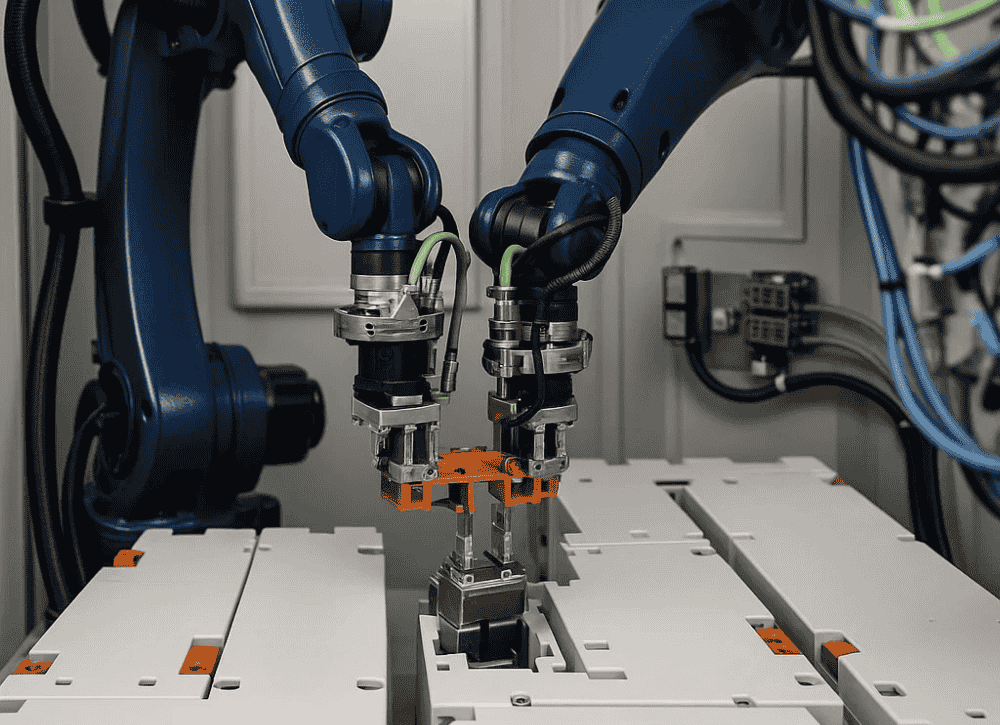Robotic Solutions for Industrial Assembly

Efficiency, Precision, and Continuity in Production Processes
Robotic solutions for industrial assembly are designed to automate the mechanical or functional joining of components, reducing processing times and ensuring consistent quality. In complex industrial environments, where precision, speed, and repeatability are essential, the integration of a robotic system makes the process more stable, scalable, and secure.
Robotic Solutions for Industrial Assembly: Operational Goal
Robotic assembly cells are designed to automate all stages where multiple components must be joined with precision and repeatability. They can handle operations such as mechanical insertions, press-fitting, screwing, welding, or gluing, making them ideal for processes requiring fast cycles and consistent tolerances. Through robot programming and integration with advanced control logic, it is possible to synchronize production flow, eliminate manual errors, and standardize the most critical assembly phases, even when dealing with product or geometry variability.
Application Sectors
Robotic solutions for industrial assembly are successfully used across multiple industrial sectors, including:
Automotive: for mechanical components, body structures, and wiring
Electronics: for the insertion and fastening of microcomponents
Food industry: for snap-fit or press-fit assemblies
Pharmaceutical: for closing and packaging medical devices
In all these cases, robotic pick-and-place systems help ensure operational continuity, even in high-frequency cycles and when handling small components.
Technical Architecture of the Cell
A robotic assembly cell includes:
An anthropomorphic or SCARA robot to manage speed and movement flexibility;
One or more gripping systems, configurable according to materials and type of joint;
Customized programming logic to define sequences, forces, and intervention times;
An optional vision system, useful for verifying presence, positioning, or completion;
An operator interface with editable recipes and full operation traceability.
Operational Benefits
Robotic assembly solutions deliver tangible advantages:
Faster and more consistent cycles, even for high-volume production;
Reduced downtime, thanks to continuous automation;
Improved assembly quality, with consistent tolerances on every component;
Adaptability to variable batch sizes, enabled by cell programmability and modularity;
Enhanced operator safety, keeping personnel away from hazardous or physically demanding tasks.
What Our Service Includes
We Handle Everything, from A to Z
We have designed our service process to ensure maximum simplicity, allowing our clients to fully focus on other strategic aspects of their business while we take care of everything else.
Feasibility Analysis
Technical Design & Development
Construction & Assembly
Testing, Validation & Start-up
Installation & Training
Contact Us for a Customized Quote
Personalized solutions tailored to the specific needs of your industry.
Our experts are ready to support you.
Tailor-made solutions for every industrial sector.
Dedicated consulting for every stage of the project.
Specialized and continuous technical support.
Technological innovation to enhance operational efficiency.
